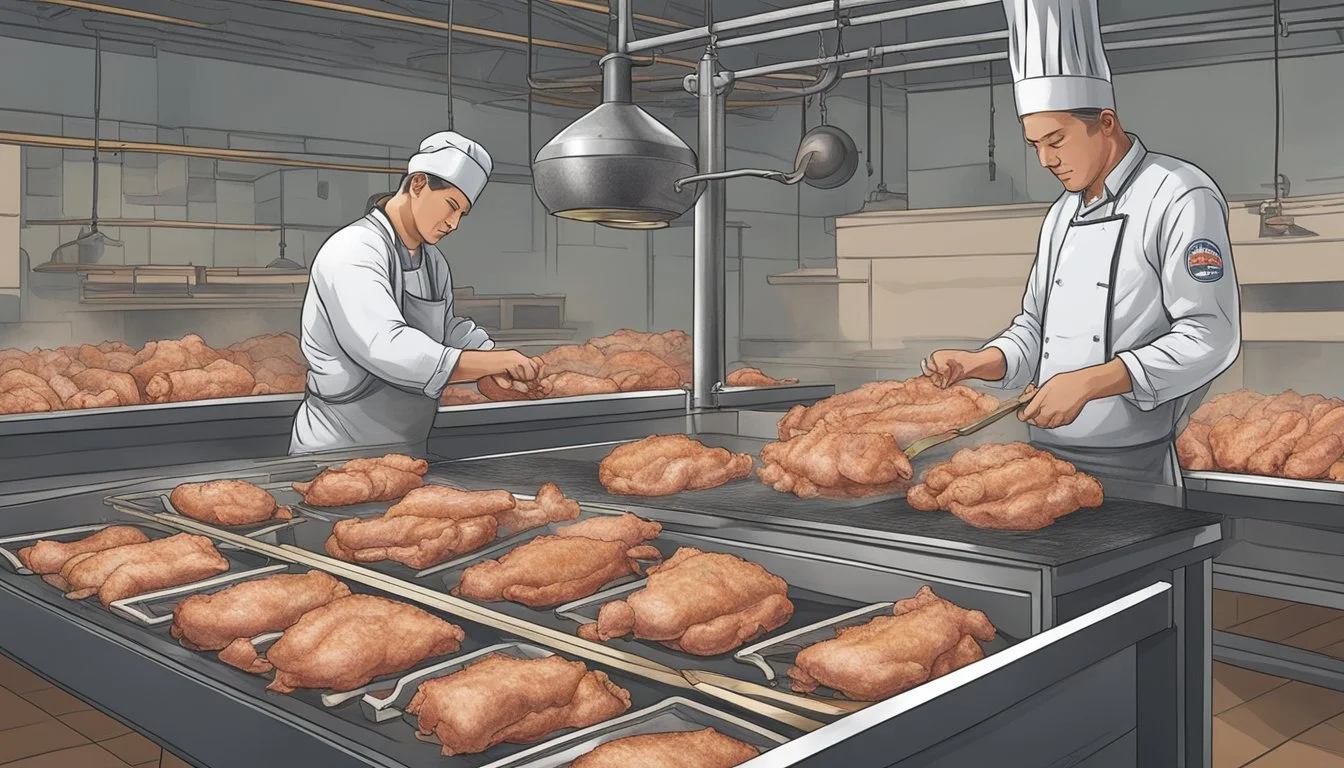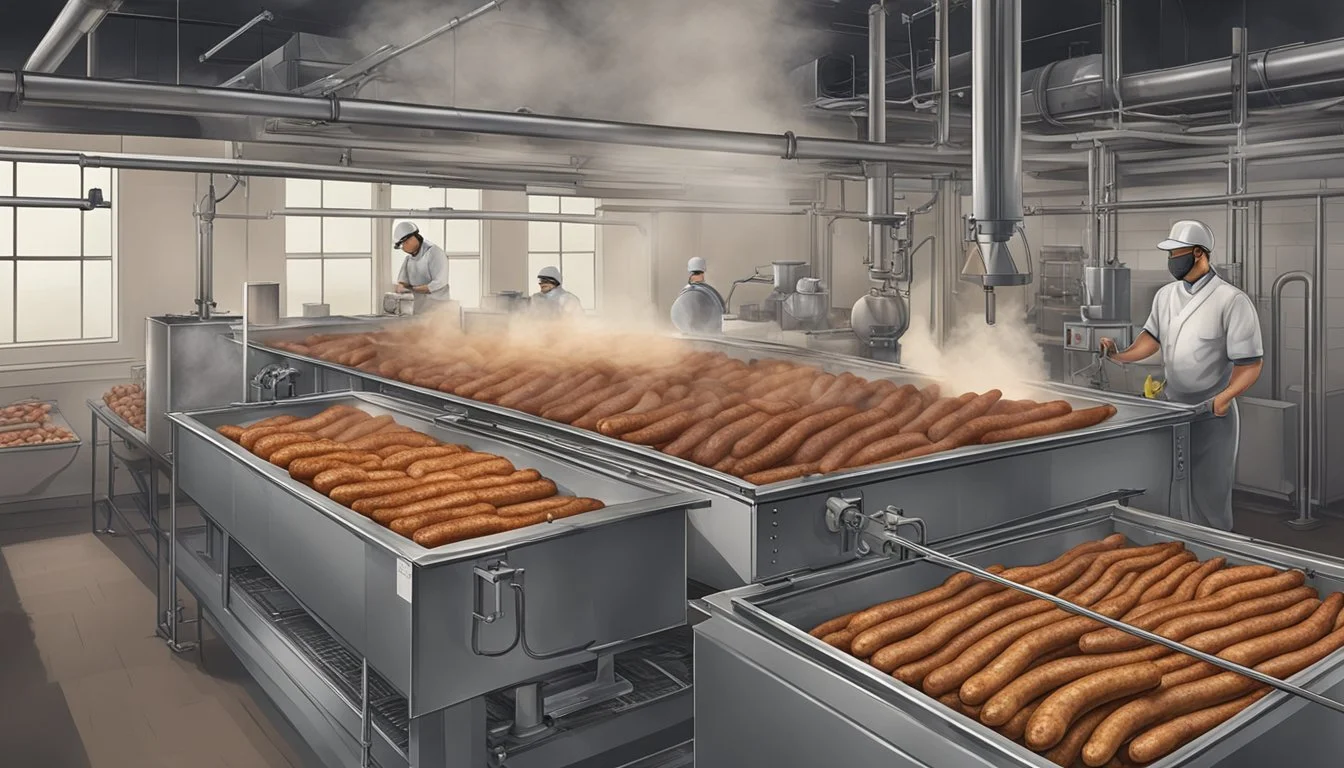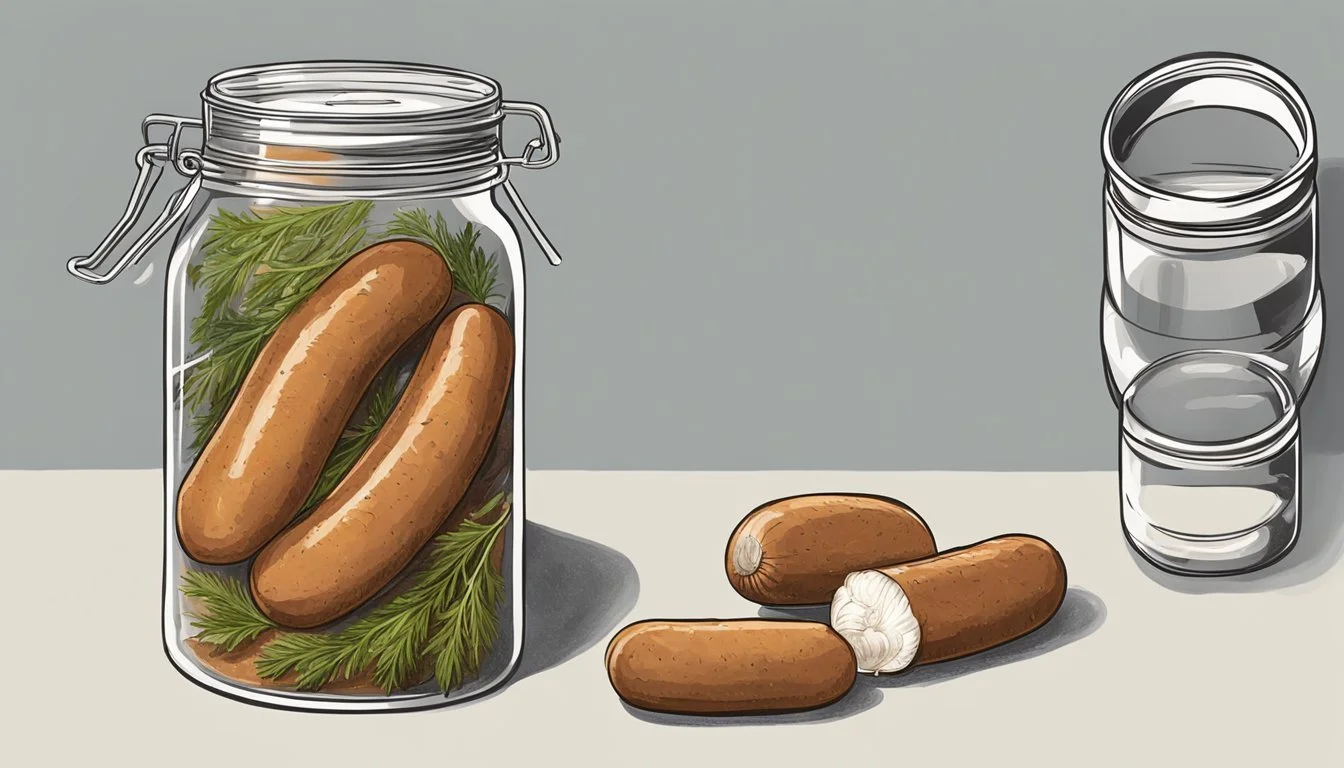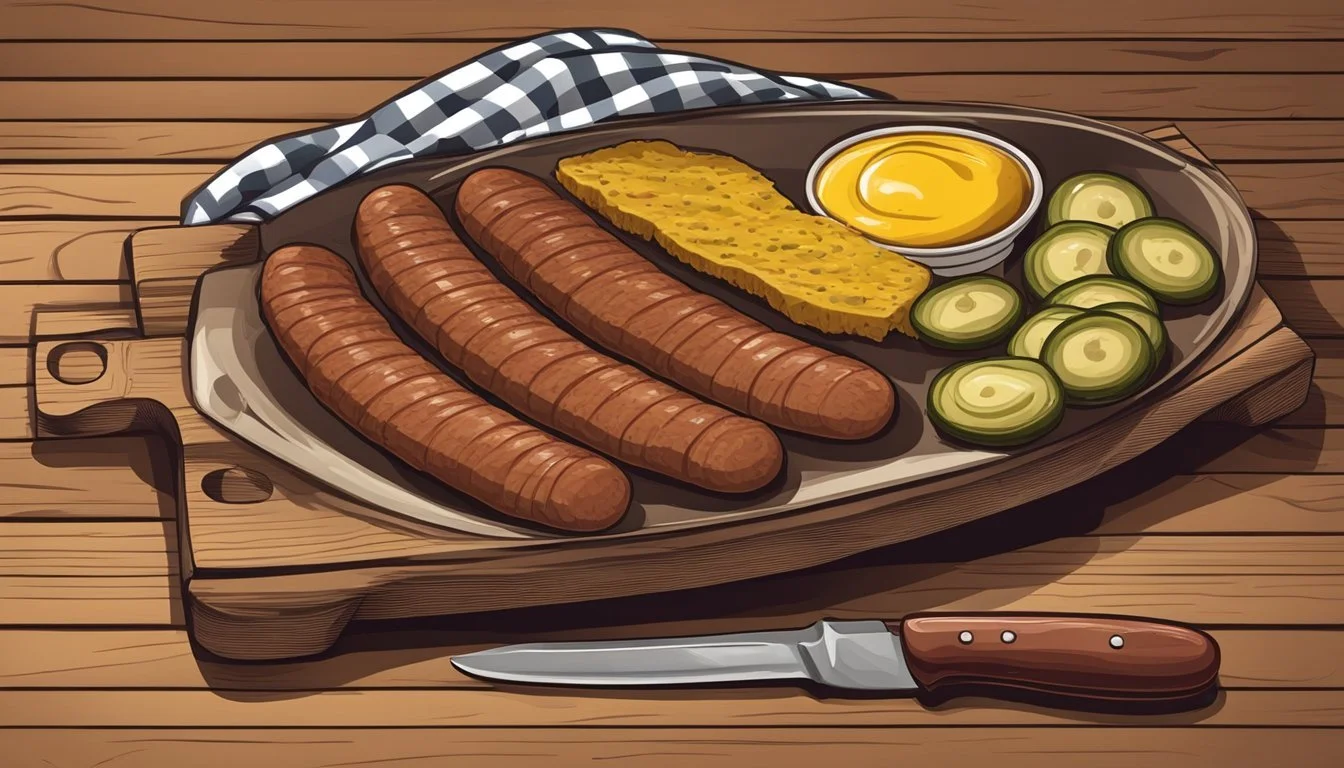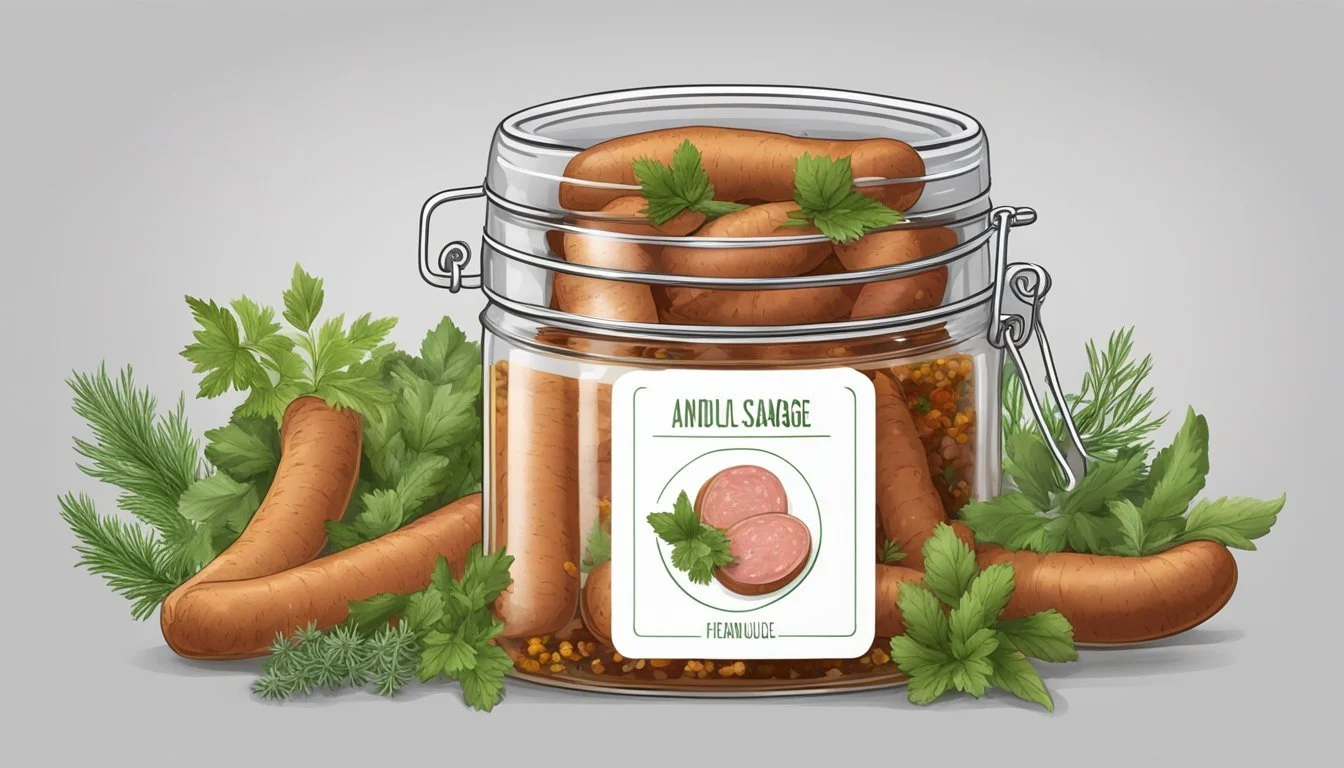How to Ferment Andouille
Mastering French Smoked Sausage Fermentation
Andouille sausage, a staple of French and Cajun cuisine, is renowned for its distinct flavor and smoked quality. Its roots extend from France to Louisiana, where it has become a key ingredient in the culinary mosaic of the region. Traditionally crafted, it involves a process of smoking and fermenting which imparts its signature robustness and depth. This French smoked sausage is not merely a food item but a cultural artifact, reflecting the fusion of French and Cajun techniques and tastes.
The creation of andouille sausage begins with the careful selection of pork, typically from the shoulder or belly, which is then seasoned with a blend of spices including garlic, peppers, onions, and a mix of herbs that echo the rich Cajun heritage. The fermentation process is critical—it involves allowing beneficial bacteria to enhance the sausage's flavor and longevity. This procedure, anchored in the art of charcuterie (What wine goes well with charcuterie?), transforms simple ingredients into a dense, smokey sausage with layers of complex flavor.
While smoking the andouille, attention to detail is paramount. Wood selection for the smoker can range from pecan to hickory, each imparting its unique essence to the sausage. The characteristic smokiness is achieved through a controlled and precise application of heat and smoke, making andouille a versatile component of many dishes, from gumbo to jambalaya, providing a bold flavor that is unmistakable and irresistibly Cajun.
History and Tradition
Andouille sausage is an emblematic ingredient with a story deeply rooted in tradition. This section delves into the historical tapestry that weaves the backdrop of this distinctive smoked sausage.
Origins in France
Brittany and Normandy in France are regions known for creating the original Andouille sausage. Its French legacy is primarily as a culinary use of offal, specifically the intestines and stomach of pigs. The sausage is smoked, lending it a distinctly hearty flavor, and typically incorporates spices and seasonings indicative of French culinary tradition. Historians trace Andouille back to the influence of Roman culinary habits, wherein the Latin word "inductilia" is noted to mean "things introduced into".
Popularity in Louisiana
With the migration of French settlers to the New World, particularly in Louisiana, Andouille sausage became a staple of Cajun and Creole cooking. Local chefs adapted the French Andouille to available resources, using the pork shoulder for a leaner version and omitting the strong iron flavor associated with the traditional use of offal. Smoked Andouille sausage is now a key ingredient in Louisiana favorites such as gumbo and jambalaya, with its smoky depth enriching these iconic dishes. Over centuries, its integration into Louisiana's food culture has left a lasting mark on the palate of New Orleans Creole cooking.
Preparing the Pork
The quality of Andouille sausage is directly influenced by the careful selection and preparation of pork. Proper trimming and grinding are fundamental steps that ensure flavor and texture.
Selecting the Right Cut
For making Andouille sausage, one should opt for pork shoulder, also known as pork butt. This cut is preferred due to its ideal balance of meat and fat, which is crucial for a moist and flavorful sausage. The pork shoulder should be fresh and of high quality to ensure the best taste.
Trimming and Grinding
Before grinding, trimming excess fat and sinew from the pork shoulder enhances the overall sausage quality. The trimmed meat should be cut into 1 to 2-inch pieces to facilitate even grinding. When grinding the meat, it's important to use a meat grinder with the appropriate plate size. For authentic Andouille sausage, the meat is typically ground through a coarse die, 7 or 8 mm, to maintain a chunky texture. Ensure that the equipment is well-chilled before grinding to prevent fat smearing, which can adversely affect the sausage's texture.
Spices and Seasoning
In crafting Andouille sausage, the selection and preparation of spices and seasoning are pivotal. They impart the distinct smoky and robust flavors characteristic of this French sausage.
Choosing Spices
When selecting spices for Andouille sausage, specificity is key. The spices not only contribute to the taste but also to the fermentation process, enhancing the meat's preservation and flavor development.
Paprika: Smoked paprika offers a rich smokiness.
Garlic Powder: Provides a savory base note.
Salt: Essential for curing and flavor.
Cayenne Pepper: Adds a noticeable heat element.
Black Pepper: Contributes a sharp, earthy complexity.
Onion Powder: Enhances the depth of flavor profile.
Sage: Introduces an aromatic herbaceous quality.
Bay Leaves: Infuse a subtle, herbal background note.
Allspice: Adds a warm, nuanced undertone.
Crushed Red Peppers: Brings a moderate spice.
Pequin Pepper: Offers a unique, fiery kick.
Nutmeg and Mace: Create a slight sweet, warm spice harmonic.
Ancho Chili: Provides a mild, smoky sweetness.
Preparing Seasoning Mix
The preparation of the seasoning mix should be done with precision, keeping in mind that each spice will interact with others and the meat during fermentation.
Measure: Accurately measure each spice, maintaining balance between piquancy, smokiness, and aromatic elements.
Mix: Combine the spices in a bowl, ensuring even distribution for a consistent flavor profile in each batch of sausage.
Cure Application: Apply the seasoning mix to the meat before the fermentation process, allowing for ample absorption.
By carefully selecting and preparing the spices and seasoning, Andouille sausage can achieve its full flavor potential, making the overall experience authentic and enjoyable.
Casing and Stuffing
When making Andouille, a French smoked sausage, choosing the right casings and employing a proper stuffing technique are critical to achieving the authentic texture and flavor.
Types of Casings
Traditionally, hog casings are utilized for making Andouille sausage. These casings come from the small intestine of the hog and are favored for their durability and ability to impart a pleasant snap when bitten into. An alternative is beef casings, obtained from the large intestine, which are also suitable but result in a thicker sausage. For those exploring non-traditional approaches, collagen or fibrous casings may be considered, albeit lacking the authentic textural qualities. Here is a quick comparison:
Hog Casings: Source - Hog's small intestine, Texture - Delicate, natural
Beef Casings: Source - Beef large intestine, Texture - Thicker, robust
Collagen/Fibrous: Source - Synthetic, Texture - Uniform, less natural
Stuffing Technique
To stuff sausage efficiently and with uniformity, a sausage stuffer is often used. This device ensures that the ground meat mixture is evenly distributed within the casing, minimizing air pockets which can compromise the sausage's integrity. The general steps are as follows:
Soak the casings in water to ensure they are pliable and easy to work with.
Older, more traditional methods may involve using sections of cleaned tripe or stomach, which should also be thoroughly rinsed and prepared.
Load the stuffer with the prepared meat mixture, ensuring there are no air gaps.
Gently feed the casing onto the stuffer's nozzle, tying off the end to prevent the filling from escaping.
Crank the stuffer handle steadily, allowing the meat to fill the casing without rushing, to avoid rupturing.
Twist the sausage into links at regular intervals, being careful to maintain even pressure to keep the links uniform in size.
Employing the correct casing and stuffing technique will result in a superior homemade sausage that retains its shape during the smoking process and exhibits the characteristic flavors and textures of authentic Andouille.
Fermentation Process
The fermentation process of Andouille sausage involves two critical stages: curing the meat to prepare it for fermentation, and then controlling the environmental conditions to allow the beneficial bacteria to work.
Curing the Sausage
To begin the fermentation process, the sausage maker first creates a cure. The curing mixture typically includes kosher salt and sugar, which serve to both flavor the meat and create an environment in which bacteria can thrive. The salt works to draw out moisture, creating a less hospitable environment for harmful bacteria, while the sugar provides a food source for the beneficial lactic acid bacteria necessary for fermentation.
Key ingredients for the cure:
2.5% kosher salt (by weight of the meat)
0.25% curing salt (sodium nitrite, also known as pink salt)
1% sugar (to provide energy for lactic acid bacteria)
The proper mixture is rubbed onto the chopped meat and left to sit, allowing the cure to penetrate and prepare the meat for smoking and fermentation.
Controlled Fermentation
After smoking, Andouille sausage must be fermented in a controlled environment to achieve the desired flavor, acidity, and safety. Fermentation requires a specific range of temperature and humidity, where the lactic acid bacteria can thrive and produce lactic acid, dropping the pH of the sausage.
Ideal fermentation conditions:
Temperature: 75°F to 85°F
Humidity: 85% to 90%
Time: 24 to 72 hours (until pH reaches below 5.3)
It's essential to maintain these conditions to ensure a successful fermentation process. The maker monitors the pH throughout to confirm the acidity level is sufficient to deem the sausage safe to eat and to ensure the development of the characteristic tangy flavor. Once the desired pH is reached, the fermentation stage is complete, and the Andouille sausage is ready for the final drying phase.
Smoking the Andouille
When it comes to crafting authentic Andouille sausage, smoking is a crucial step that imparts the traditional smoky flavor and aids in preservation. The wood choice and smoking technique are two key components that must be carefully executed for best results.
Choosing Wood
Smoking Andouille sausage traditionally involves the use of pecan wood, but other hardwoods like hickory or oak can also be used. Pecan wood provides a mild, sweet smoke that complements the spicy profile of Andouille, enhancing its flavor without overwhelming it.
Types of Wood Recommended for Andouille:
Primary Choice: Pecan
Alternatives: Hickory, Oak
Smoking Technique
The smoker should be prepared to a lower temperature initially, gradually increasing as the process continues. This technique allows for a deep, even infusion of smoky flavor.
Key Steps in Smoking Andouille Sausage:
Preheat smoker to 130°F (55°C).
Place Andouille in the smoker, ensuring there's enough space for even smoke circulation. They can be laid on racks or hung on hooks.
Monitor the internal temperature closely. It must reach an internal temperature of 165°F (74°C) for safe consumption.
Increase the smoker's temperature by 20°F (11°C) every hour, over the course of four hours.
One should also ensure the use of a reliable smoker capable of maintaining consistent temperatures. Whether one opts for a traditional smoker or a modern grill with a smoking feature, the equipment must allow for precise temperature control to avoid under or over-smoking the Andouille.
Cooking and Recipes
This section of the article provides a deep dive into how Andouille sausage is incorporated into traditional Creole dishes as well as innovative recipes, articulating its versatility and rich flavor profile.
Traditional Creole Dishes
Andouille sausage plays a stellar role in the traditional Creole dishes of gumbo and jambalaya. It is known for its smoky depth which, when added to gumbo, creates layers of complex flavors. A classic gumbo incorporates Andouille sausage cut into half-inch slices, browned to perfection, and simmered along with okra, bell peppers, onions, and a rich stock thickened with a dark roux. Spices such as cayenne pepper and bay leaves are essential in bringing out the iconic spicy profile of the dish.
Another cornerstone of Creole cooking where Andouille sausage shines is within the savory rice dish jambalaya. It features the smoked Andouille sausage as a primary ingredient, combined with the holy trinity of Creole cooking—onions, celery, and bell peppers—and cooked with rice, stock, and a variety of herbs. The heat level in jambalaya can range from mild to firey hot, depending on the amount of cayenne and hot sauce added.
Innovative Andouille Recipes
Chefs and home cooks have been creative with Andouille sausage, introducing it to dishes where its smoky flavor can make a unique impact. A popular trend is incorporating Andouille into a mac and cheese variant, where its smokiness cuts through the creamy richness of the cheese sauce, adding a pleasant heat and texture to the dish.
Andouille and Grits: Andouille sausage is sliced and sautéed until golden, then served atop creamy, buttery grits. A sprinkle of green onions and a dash of hot sauce can elevate the dish further.
Spicy Potato Soup: Diced Andouille sausage imparts a piquant upgrade to the comforting classic of potato soup, with the sausage's flavors infusing the broth beautifully.
Experimentation with Andouille sausage isn't limited to these examples; it can also enhance red beans and rice, become a flavorful addition to boudain and chaurice, or even serve as a substitute for tasso in various recipes. The opportunities for incorporating Andouille into cooking are as broad as one's culinary imagination allows.
Pairing and Serving Suggestion
When it comes to fermenting andouille, a French smoked sausage, the key to a successful dish lies in balancing the spicy, robust flavor with the right accompaniments. Below are carefully chosen pairings and ways to serve andouille that will satisfy the palate and enhance the dining experience.
Complementary Flavors
Wine:
To complement the spice of the andouille, a bold red wine such as a Syrah or Zinfandel can be an excellent choice. These wines have the depth and spice that can stand up to the intense flavors of the sausage.
Herbs:
Incorporating herbs like thyme can add a fragrant counterpoint to andouille's spiciness. Thyme's subtle earthiness can be especially harmonious with the sausage's flavor profile when added to dishes.
Serving as an Appetizer
Andouille Slices:
Thin slices of andouille served on a platter can make for a simple yet savory appetizer. They may be accompanied by a variety of dips and mustards that underscore the smokiness of the sausage.
Cheese: A selection of cheeses, particularly those that are creamy or tangy, can balance the andouille's heat.
Olives: Offering both green and black olives provides a salty contrast to the smoky and spicy sausage.
Bread: Slices of baguette or artisanal bread can serve as a neutral base for the bold flavors of the andouille.
When choosing how to serve andouille, it is important that one considers the intensity of its flavor and seeks to create a harmonious serving that pleases the senses in every bite.
Storage and Preservation
Proper storage and preservation are crucial in maintaining the quality and safety of Andouille sausage. This section will guide through the recommended refrigeration and freezing techniques.
Refrigerating Andouille Sausage
Andouille sausage, once fermented, should be stored in the coldest part of the refrigerator, ideally at or below 40°F to slow down bacterial growth and preserve its quality. For optimal freshness, it should be consumed within three to five days.
Wrap Technique:
Wrap tightly with plastic wrap
Place in an airtight container or zip-top bag
Hydration Maintenance:
Use a damp paper towel in wrapping if sausage appears dry
This helps maintain moisture without compromising the texture
Freezing Techniques for Andouille Sausage
For long-term preservation, freezing Andouille is effective. Sausages should be frozen at 0°F or below, preventing bacterial growth and preserving quality for up to two months.
Freezing Steps:
Portion the Andouille sausage
Wrap each portion in freezer paper or aluminum foil
Place wrapped sausage in a freezer bag, removing as much air as possible
Thawing Advice:
Always thaw frozen Andouille in the refrigerator or by submerging in cold water, ensuring a safe and even thawing process.
Nutritional Information
When considering the nutritional content of fermented Andouille sausage, the primary components are pork meat and fat. The meat provides protein, while the pork fat contributes to the total fat content.
Calories and Fats: An average serving size of Andouille sausage contains approximately:
Calories: 210
Total Fat: 19g
Saturated Fat: 6.3g
Trans Fat: 0.2g
Polyunsaturated Fat: 2.5g
Monounsaturated Fat: 7.6g
Protein: Each serving also provides a significant amount of protein, essential for muscle repair and growth.
Other Nutrients: Apart from fats and protein, Andouille sausage may contain varying amounts of other nutrients such as sodium, cholesterol, and certain vitamins depending on the specific recipe and preparation method.
It is important to be aware that the calorie and nutrient content can vary based on the size of the sausage and the ingredients used. The type of pork meat, as well as the amount and type of seasoning, can affect the nutritional profile. Consumers looking to include Andouille sausage in their diet should consider the high fat content, particularly the saturated fat, in relation to their individual dietary needs.
Understanding Food Safety
When fermenting andouille sausage, one should prioritize food safety, ensuring that processing temperatures avoid the growth of harmful bacteria and the final product is safe to consume.
Importance of Proper Temperature
Fermentation Temperature: Proper fermentation of andouille involves maintaining a controlled environment where the sausage cures at a temperature specific to activating beneficial bacteria while inhibiting pathogens. The precise temperature range is critical for fermentation, typically between 70°F and 90°F.
Cooking and Smoking: While smoking, it's imperative to reach the adequate internal temperature to ensure pathogens are killed. The safe internal temperature for andouille sausage should be 160°F for those containing pork.
Preventing Contamination
Handling: The sausage maker must handle ingredients and equipment with clean hands and utilize sanitized surfaces to prevent contamination.
Meat Preparation: Use fresh, high-quality meat and keep it chilled. One may partially freeze the meat before grinding to maintain a temperature that discourages bacterial growth.
Cold Water Use: When needed, cold water can be used during the mixing process to keep temperatures down and ensure the meat mixture remains below 40°F thereby reducing the risk of spoilage and bacterial growth.



